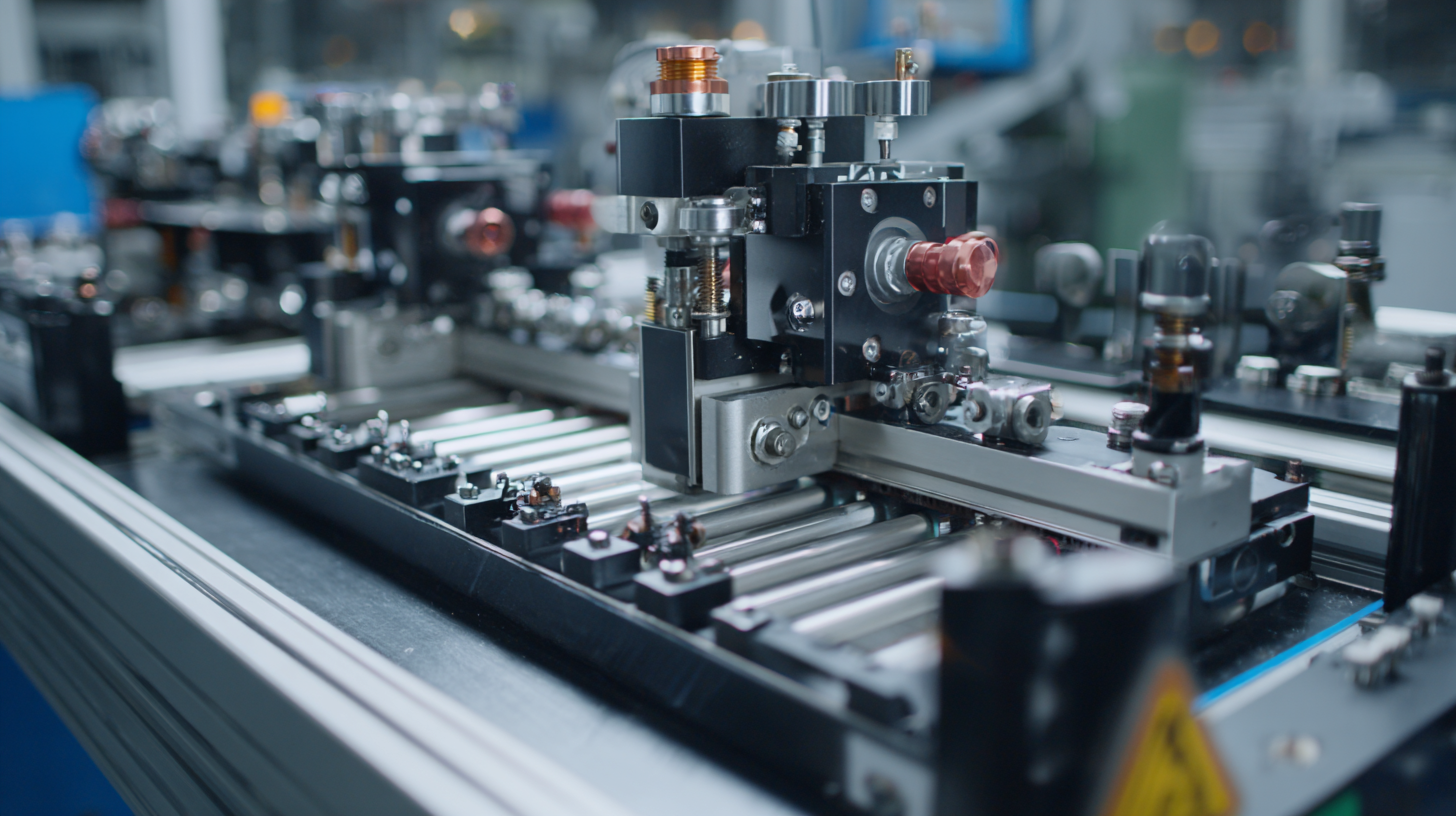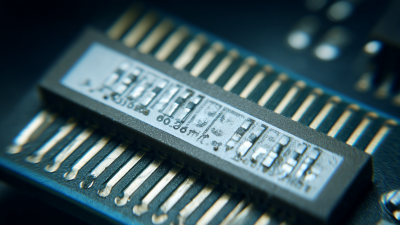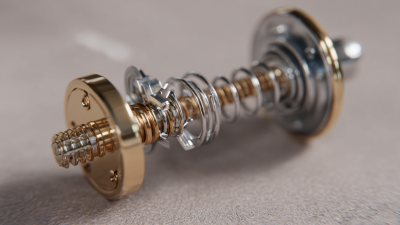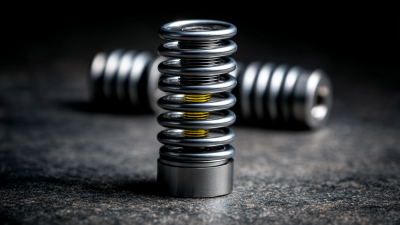Leave Your Message
The landscape of advanced manufacturing is on the brink of transformation with the integration of Automatic Carrier Tape Forming Machines. As industries increasingly demand higher efficiency and precision in component packaging, these machines have emerged as a pivotal solution. According to a report by Technavio, the global automatic carrier tape market is projected to grow at a CAGR of 6.4% from 2022 to 2026, emphasizing the importance of this technology in the evolving manufacturing ecosystem.

In 2025, the adoption of Automatic Carrier Tape Forming Machines is expected to drive significant enhancements in production workflows, enabling manufacturers to streamline operations and minimize waste. The push towards automation and smart manufacturing, propelled by Industry 4.0 initiatives, is correlating with a growing reliance on these machines, which offer not only speed but also consistency in the packaging of electronic components. As a result, companies are not only improving their operational efficiency but are also better positioned to meet the rising consumer demand for high-quality electronic products.
Ultimately, the future of manufacturing in 2025 will be defined by the capabilities of Automatic Carrier Tape Forming Machines, which will serve as the backbone for innovative production methods. This aligns with the findings of McKinsey, which suggest that improved automation can lead to a productivity increase of up to 20-30% in manufacturing processes. As the industry progresses, these machines will play a critical role in enabling manufacturers to unlock unprecedented levels of efficiency and competitiveness.
As we approach 2025, the advancements in automatic carrier tape forming technology are set to revolutionize the landscape of advanced manufacturing. This innovation not only streamlines production processes but also enhances the overall efficiency of operations. Recent reports from the Advanced Manufacturing Office indicate that by optimizing carrier tape production, manufacturers can achieve up to a 30% reduction in material waste and increase output by 20%. Such figures underscore the potential for automatic carrier tape forming machines to significantly elevate productivity levels.
One of the key benefits of modern machine technology is the integration of AI-driven systems that improve precision and adaptability. These machines can dynamically adjust to varying production requirements, ensuring that manufacturers can respond swiftly to market demands without sacrificing quality. A study by the Society of Manufacturing Engineers revealed that companies adopting these advanced machines experienced a 25% decrease in operational costs within the first year of implementation.
**Tips:** To maximize the benefits of automatic carrier tape forming machines, invest in training for your team to ensure they are well-versed in operating the latest technology. Additionally, consider regular maintenance schedules to minimize downtime and enhance machine longevity. Lastly, analyze production data continuously to identify areas for improvement—this will help in capitalizing on the system's full potential.

The integration of smart systems into automatic carrier tape forming machines is revolutionizing advanced manufacturing. As reported by the International Federation of Robotics, the global market for industrial robots is expected to grow at a compound annual growth rate (CAGR) of 14% through 2025. This boom is driven by the increasing demand for efficiency and precision, which smart systems can provide. By embedding advanced sensors and AI algorithms into these machines, manufacturers can achieve unprecedented levels of accuracy in the formation of carrier tapes, essential for high-tech industries including electronics and healthcare.
Furthermore, a study by McKinsey & Company revealed that companies adopting smart manufacturing technologies often see productivity increases of up to 30%. These enhancements stem from real-time data analytics that allow for proactive adjustments in the manufacturing process, reducing waste and downtime. The precision afforded by smart systems not only improves output quality but also fosters greater agility in response to market changes, allowing manufacturers to remain competitive in a rapidly evolving landscape. As businesses prepare for the future, the investment in automated solutions that incorporate smart technologies will undoubtedly play a key role in shaping the next generation of advanced manufacturing.
As we progress into 2025, the manufacturing industry faces increasing pressure to adopt sustainable practices. Carrier tape forming machines, essential for the packaging of electronic components, play a crucial role in this transition. These machines not only streamline production processes but also offer significant eco-friendly benefits. By facilitating the efficient use of materials, they minimize waste and enhance the recycling potential of the carrier tapes. Therefore, optimizing these machines can lead to a considerable reduction in the environmental impact of electronic manufacturing.
Moreover, advancements in technology are enabling the development of more energy-efficient carrier tape forming machines. Innovations such as smart monitoring systems and energy recovery mechanisms can significantly decrease energy consumption during production. As manufacturers seek to align with global sustainability goals, the integration of these advanced machines into the production line can be a game changer. This ensures that manufacturers not only improve their output efficiency but also contribute positively to the environment, showcasing a commitment to sustainable practices in an era where consumer awareness is paramount.
The economic impact of automation in advanced manufacturing is significant, particularly in the realm of automatic carrier tape forming machines. As industries evolve and the need for precision increases, these machines offer a streamlined alternative to traditional methods. By automating the creation of carrier tapes, manufacturers can reduce labor costs, minimize errors, and significantly increase production speeds. This efficiency leads to substantial cost savings, allowing companies to allocate resources towards research and development or other innovative practices.
In addition to direct cost savings, using automatic carrier tape forming machines generates long-term benefits. Businesses can achieve higher output levels without a proportional increase in workforce, which mitigates the challenges posed by labor shortages in skilled positions. Moreover, the consistent quality and reliability of automated processes reduce waste, further enhancing profitability. As manufacturers adopt these technologies, the scalability of production becomes more manageable, enabling them to respond swiftly to market demands and trends, ultimately driving economic growth within the sector.

The future of automatic carrier tape forming machines is poised for significant transformation by 2025, driven by advancements in technology and evolving industry demands. One major trend is the integration of artificial intelligence and machine learning, which will enhance the machines' ability to adapt to varying production needs. These smart systems will not only optimize the forming process but also analyze data in real-time to predict maintenance needs, ensuring minimal downtime and increased productivity.
Moreover, as the push for sustainability grows, manufacturers will likely focus on eco-friendly materials and energy-efficient processes in carrier tape production. The use of biodegradable materials in manufacturing processes will become more prevalent, aligning with global environmental goals. Enhanced automation features will facilitate faster changeovers and increased flexibility, allowing businesses to meet the dynamic requirements of advanced manufacturing sectors, such as electronics and automotive. Ultimately, these trends indicate a future where automatic carrier tape forming machines are not only more efficient but also align with broader sustainability efforts in the manufacturing landscape.
| Dimension | 2023 | 2025 | Trends Beyond 2025 |
|---|---|---|---|
| Production Speed (units/hour) | 1500 | 2500 | 3000+ |
| Energy Efficiency (% reduction) | 10% | 20% | 30%+ |
| Material Waste (%) | 5% | 3% | 1% or less |
| Automation Level (%) | 60% | 80% | 95%+ |
| Market Growth Rate (% CAGR) | 8% | 12% | 15%+ |






